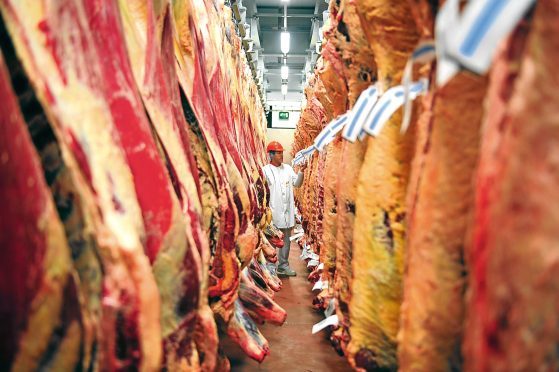A low supply of prime cattle on the market and lower carcase weights are boosting farmgate beef prices, according to Quality Meat Scotland.
The red meat levy body’s head of economics services, Stuart Ashworth, said the prime beef market was being driven by clear signals over carcase weights and limited outlets for beef from young bulls.
Historically young bulls contribute most to the supply chain during July and August accounting for 15% and 16% of prime kill, however the number of young bulls reaching abattoirs has reduced as has the availability of streers at this time of the year.
“Historically, the age of prime cattle at slaughter peaks in August and September,” said Mr Ashworth.
“However, this year the current availability of steers has been reduced as producers have reacted to the call for smaller carcases by selling steers younger and lighter.”
He said average steer carcase weights in Scotland in June were 383kg – 8kg lighter than June last year.
“Young bulls were also marketed at lighter weights and heifers have also been in tight supply, although their carcase weights were unchanged as they have historically been well within the abattoirs preferred weight ranges,” added Mr Ashworth.
He said these factors had resulted in reduced domestic supply to the UK prime beef market throughout June and July.
Mr Ashworth predicted a slight increase in numbers in the months ahead.
“In the second half of 2015 Scottish calf registrations were 1% higher than 2014 and these animals will make a significant contribution to the supply over the next six months, however calf registrations in the second half of the year are less than one-third of annual Scottish calf registrations and the effect on overall supply is reduced,” said Mr Ashworth.
The weak sterling was also helping boost farmgate prices by encouraging greater export activity and reducing the competitiveness of imported product.
“Overall beef imports have declined and with exports increasing and domestic production falling there has been a basic strength in the market which has supported firm prices for most of this year and is likely to continue to do so in the short term,” he added.










